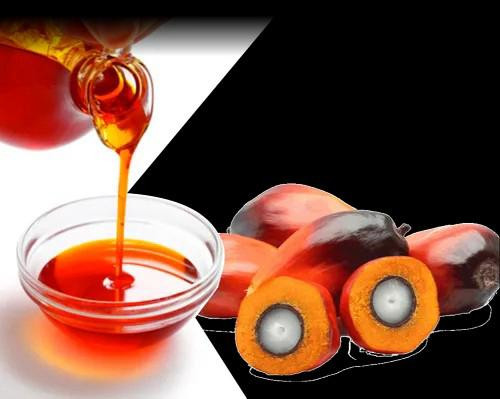Uses of Red Oil:
- Cooking: Used as a cooking oil for frying, sautéing, and in stews, sauces, and soups (such as jollof rice or palm nut soup).
- Baking: Occasionally used in baking, particularly in certain African and Caribbean recipes.
- Cosmetics: Used in the production of soaps, lotions, and skincare products due to its moisturizing properties.
- Traditional Medicine: Sometimes used in traditional medicine for its anti-inflammatory and healing properties, especially for skin care.
Benefits of Red Oil:
- Rich in Antioxidants: High in carotenoids, which have strong antioxidant properties and may help protect the body against free radicals and oxidative stress.
- Supports Heart Health: Contains a balance of saturated and unsaturated fats, with tocotrienols (a form of vitamin E) that may help reduce cholesterol and promote cardiovascular health.
- Good for Skin: The vitamins and fatty acids in red oil help nourish the skin, making it useful for treating dry skin and preventing premature aging.
- Boosts Immune System: Red oil contains vitamin A and vitamin E, which support immune function and vision health.
Characteristics:
- Deep Red to Orange Color: The oil has a bright red to orange hue due to its high carotenoid content.
- Thick and Rich Consistency: Red oil has a thicker texture compared to many other cooking oils.
- Distinctive Flavor: It has a slightly earthy, savory taste that enhances the flavor of many dishes, particularly in West African and Southeast Asian cuisine.

